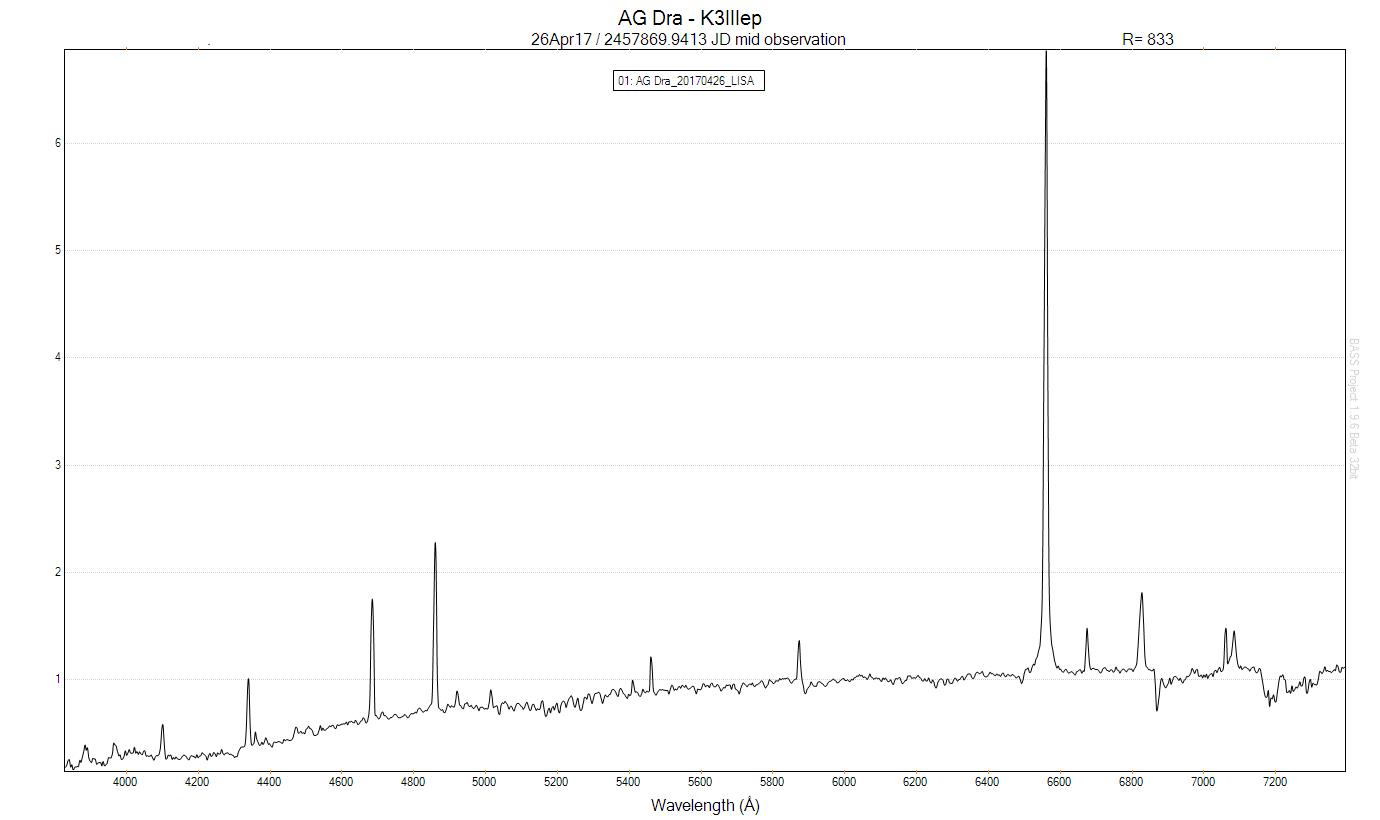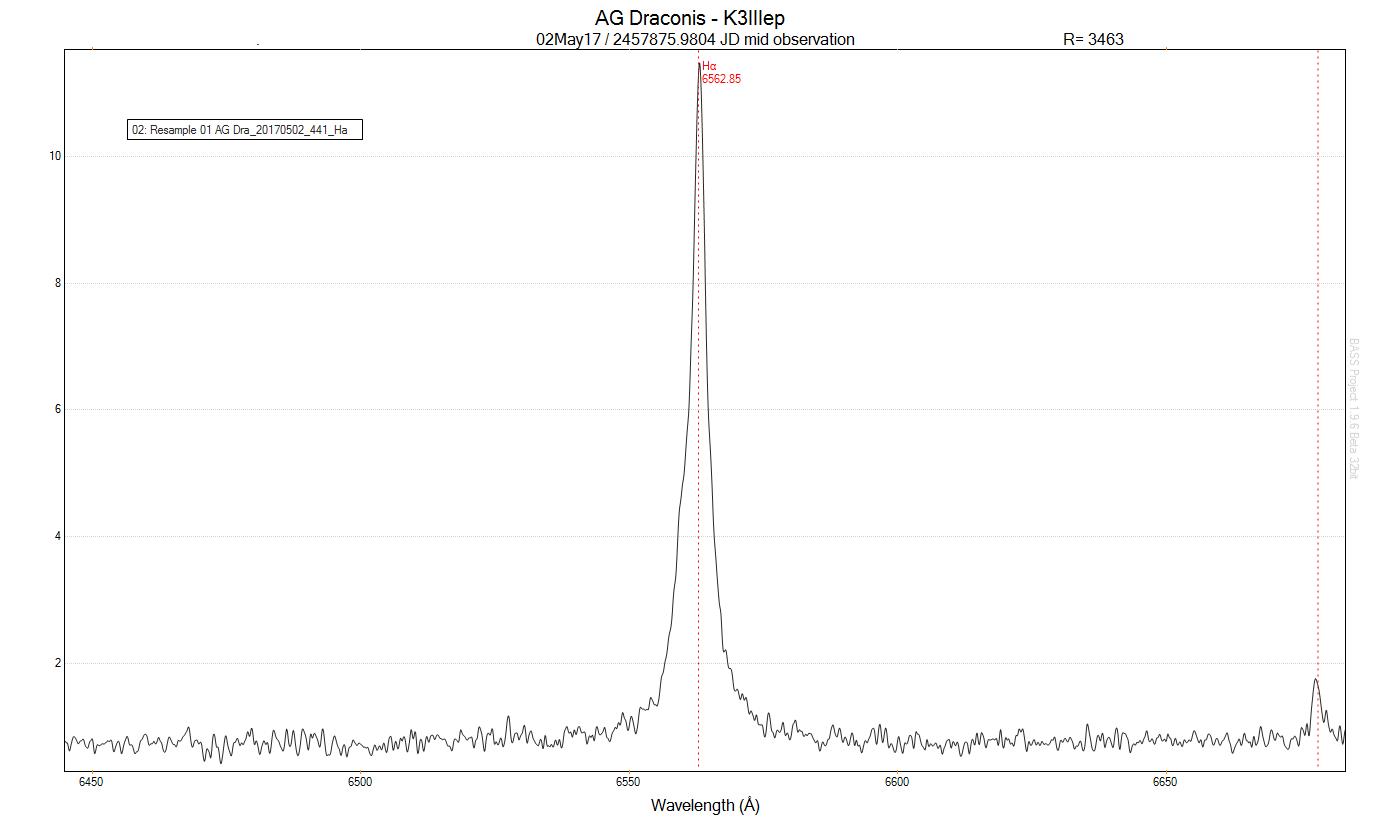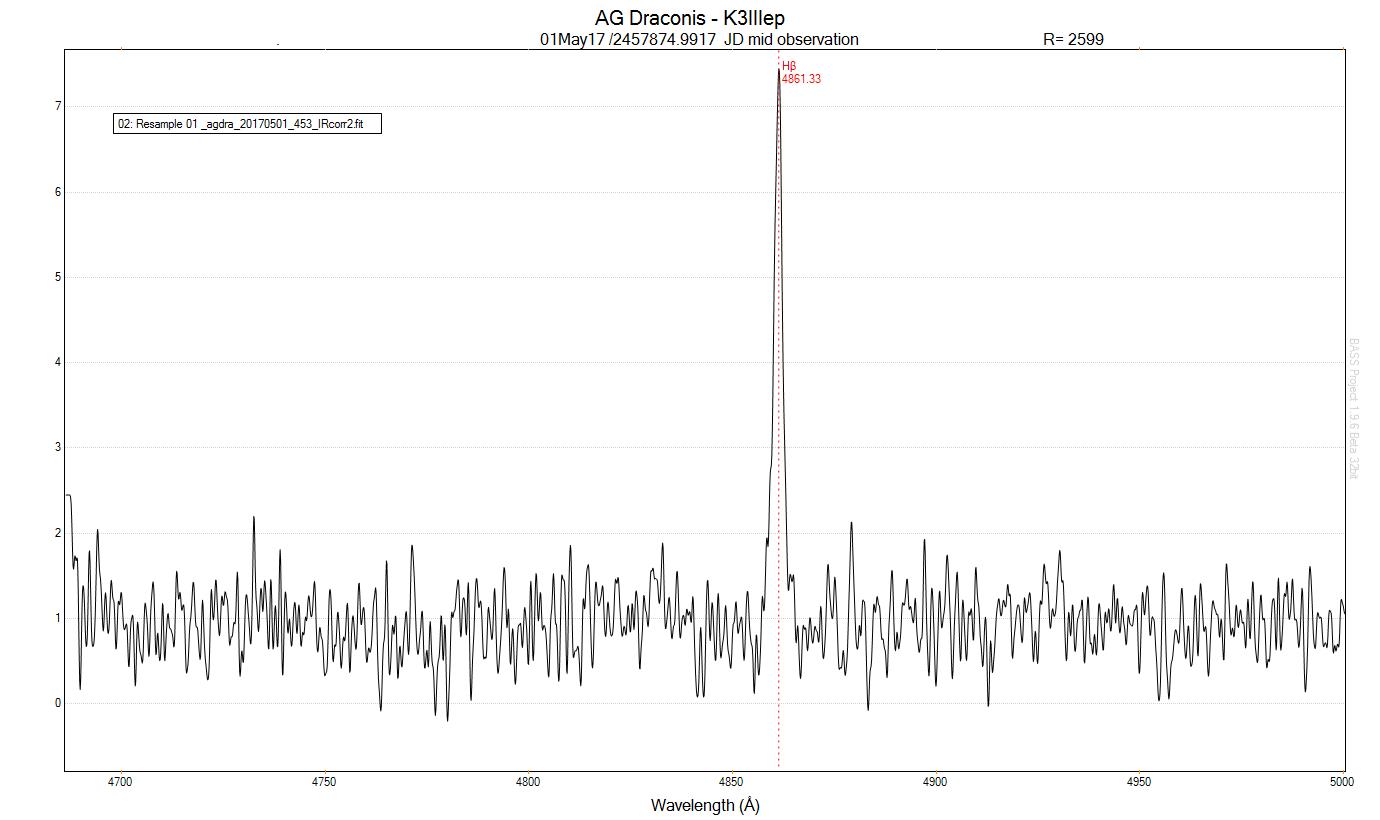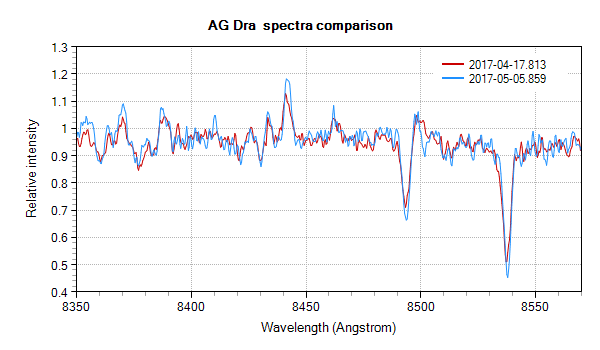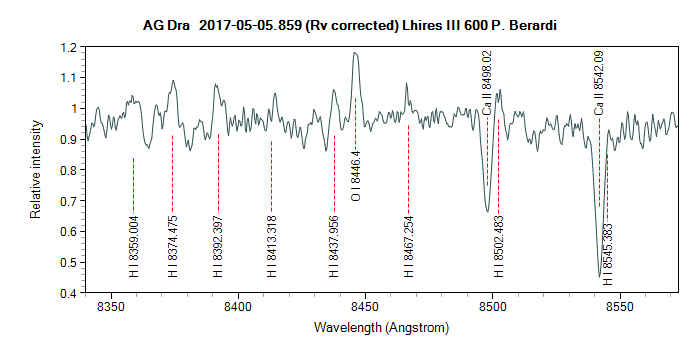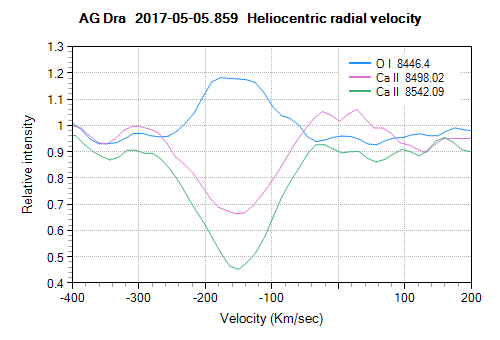Message from the team:
First of all, thank you very much for effort of you and all ARAS members. We are monitoring the ARAS database for new AG Dra observations daily and we are really delighted by the enthusiasm and passion of the ARAS observers. Thanks this huge effort, for the first time in the history of spectroscopic observations of AG Dra, this symbiotic binary is monitored with around one-day resolution. The observational data of such amount (43 spectra from the beginning of the campaign to this day) and quality will give us an unique opportunity to study the spectroscopic behaviour of this interesting interacting binary in the details, which have not parallel in an investigation of symbiotic stars.
Up to now, we are very satisfied with quality of the obtained spectra, especially with Echelle ones. Probably, not all low-resolution spectra will be suitable for our detailed analysis of the spectral behaviour of AG Dra. On the other hand, we would like to encourage even observers with low-resolution spectrographs. Their observations would play crucial role for determination of the beginning of a potential outburst of AG Dra since we have certain hints that some spectroscopic behaviour of the outburst activity of AG Dra would foreshadow the photometric one.
As we mentioned in previous, according to our detailed statistical analysis of photometric observations, we know that the the time interval between outbursts of AG Dra vary from 300–400 days, with median around 360 days. If we assume, that the last outburst occurred around JD 2 457 517, we can expect the next outburst in the interval from JD 2 457 877 (today!) to JD 2 457 917 (June 12, 2017). Of course, please take this prediction without warranty, since it is based on typical photometric behaviour of this search-less system. There is also some probability that AG Dra will return to quiescence stage as we have already detected such behaviour during the weak activity stage 1963–66.
On the other hand, we have some hints that the symbiotic system AG Dra is still active. Even though the photometric behaviour of AG Dra indicates the typical quiescence low-amplitude variability, some spectroscopic characteristics clearly demonstrate that the system is awakened state. Indeed, the equivalent widths of strong emission lines are almost stable in this period. In contrast, their profiles are typical for the active stages of AG Dra, when the blue-wing absorption component observed only during the quiescence stages is almost completely smoothed away.
So, what can we expect from AG Dra? We will see in next days. In the case of this interesting object everything is possible and as I know this object (already some 20 years) it will be certainly the less expected possibility

Once again thank you very much for your effort and we are look forward to new exciting spectra of AG Dra!
On behalf of the scientific team,
Rudolf Gális
So, just go on, with the same cadency and quality.
François
